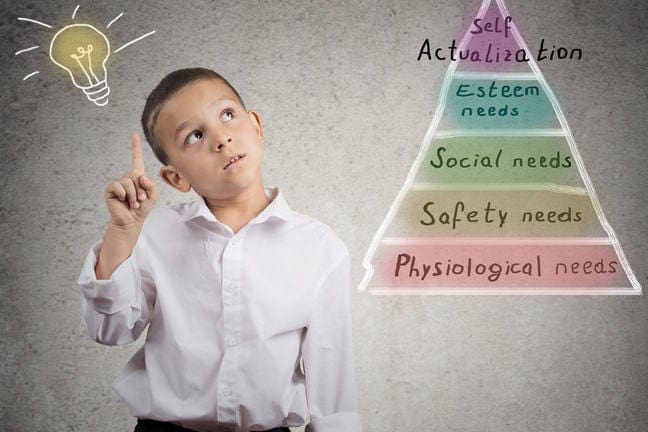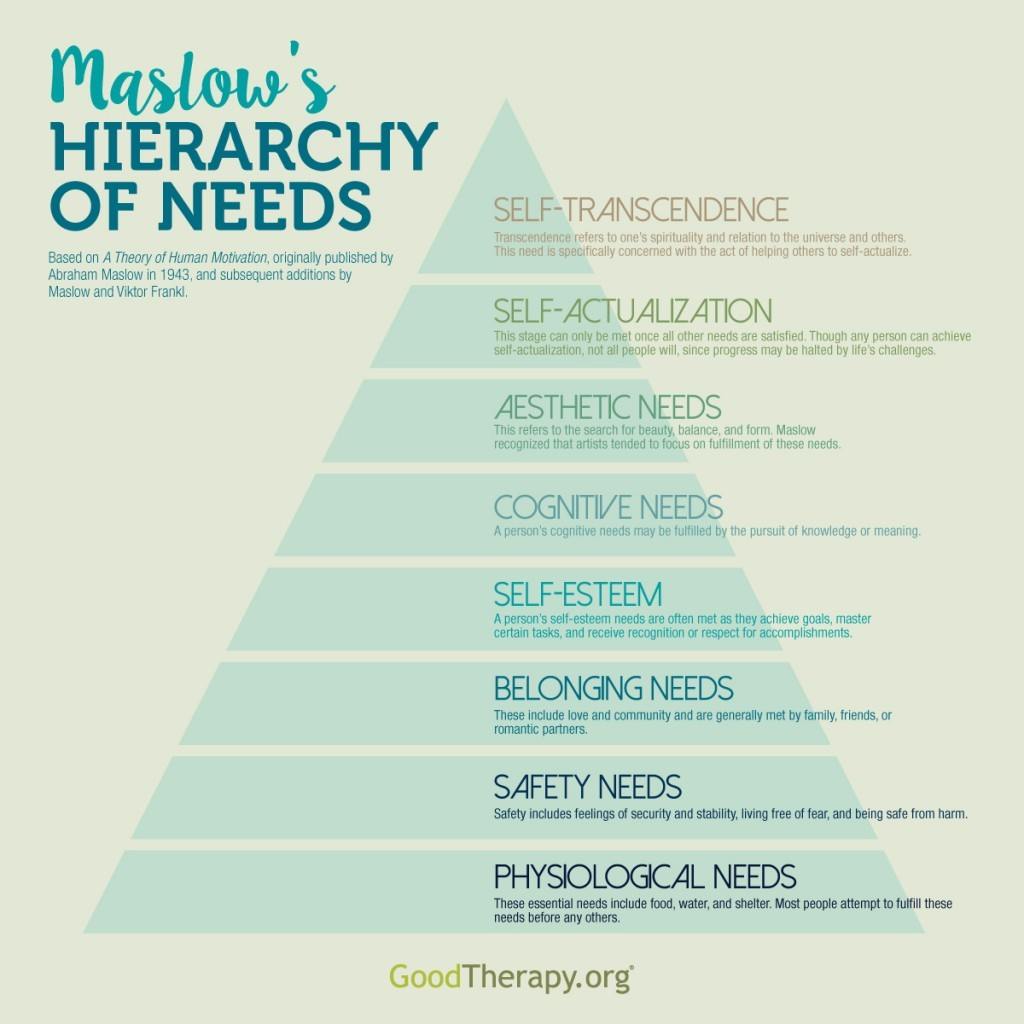Abraham Maslow’s Hierarchy of Needs

In a 1943 paper titled “A Theory of Human Motivation,” American psychologist Abraham Maslow theorized that human decision-making is undergirded by a hierarchy of psychological needs. In his initial paper and a subsequent 1954 book titled Motivation and Personality, Maslow proposed that five core needs form the basis for human behavioral motivation.
What Is Maslow’s Hierarchy of Needs?
Maslow’s hierarchy of needs is a theory of motivation which states that five categories of human needs dictate an individual’s behavior. Those needs are physiological needs, safety needs, love and belonging needs, esteem needs, and self-actualization needs.
What Are the 5 Levels of Maslow’s Hierarchy of Needs?
Maslow’s theory presents his hierarchy of needs in a pyramid shape, with basic needs at the bottom of the pyramid and more high-level, intangible needs at the top. A person can only move on to addressing the higher-level needs when their basic needs are adequately fulfilled.
- Physiological needs: The first of the id-driven lower needs on Maslow’s hierarchy are physiological needs. These most basic human survival needs include food and water, sufficient rest, clothing and shelter, overall health, and reproduction. Maslow states that these basic physiological needs must be addressed before humans move on to the next level of fulfillment.
- Safety needs: Next among the lower-level needs is safety. Safety needs include protection from violence and theft, emotional stability and well-being, health security, and financial security.
- Love and belonging needs: The social needs on the third level of Maslow’s hierarchy relate to human interaction and are the last of the so-called lower needs. Among these needs are friendships and family bonds—both with biological family (parents, siblings, children) and chosen family (spouses and partners). Physical and emotional intimacy ranging from sexual relationships to intimate emotional bonds are important to achieving a feeling of elevated kinship. Additionally, membership in social groups contributes to meeting this need, from belonging to a team of coworkers to forging an identity in a union, club, or group of hobbyists.
- Esteem needs: The higher needs, beginning with esteem, are ego-driven needs. The primary elements of esteem are self-respect (the belief that you are valuable and deserving of dignity) and self-esteem (confidence in your potential for personal growth and accomplishments). Maslow specifically notes that self-esteem can be broken into two types: esteem which is based on respect and acknowledgment from others, and esteem which is based on your own self-assessment. Self-confidence and independence stem from this latter type of self-esteem.
- Self-actualization needs: Self-actualization describes the fulfillment of your full potential as a person. Sometimes called self-fulfillment needs, self-actualization needs to occupy the highest spot on Maslow’s pyramid. Self-actualization needs include education, skill development—the refining of talents in areas such as music, athletics, design, cooking, and gardening—caring for others, and broader goals like learning a new language, traveling to new places, and winning awards.
Deficiency Needs vs. Growth Needs on Maslow’s Hierarchy
Maslow referred to self-actualization as a “growth need,” and he separated it from the lower four levels on his hierarchy, which he called “deficiency needs.” According to his theory, if you fail to meet your deficiency needs, you’ll experience harmful or unpleasant results. Conditions ranging from illness and starvation up through loneliness and self-doubt are the byproducts of unmet deficiency needs. By contrast, self-actualization needs can make you happier, but you are not harmed when these needs go unfulfilled. Thus, self-actualization needs only become a priority when the other four foundational needs are met.


Frequency Music this week 963Hz Solfeggio Frequency is known as the frequency of God. It’s also the frequency associated with Crown Chakra. Meditating on this chakra and restoring the positive energy flow in this chakra helps us to reduce overthinking, tension headaches, and stress-related issues. We have combined it with Ancient Shamanic Mantra Echoes and Tibetan Healing Bell Sounds.
Thank You Master Class



